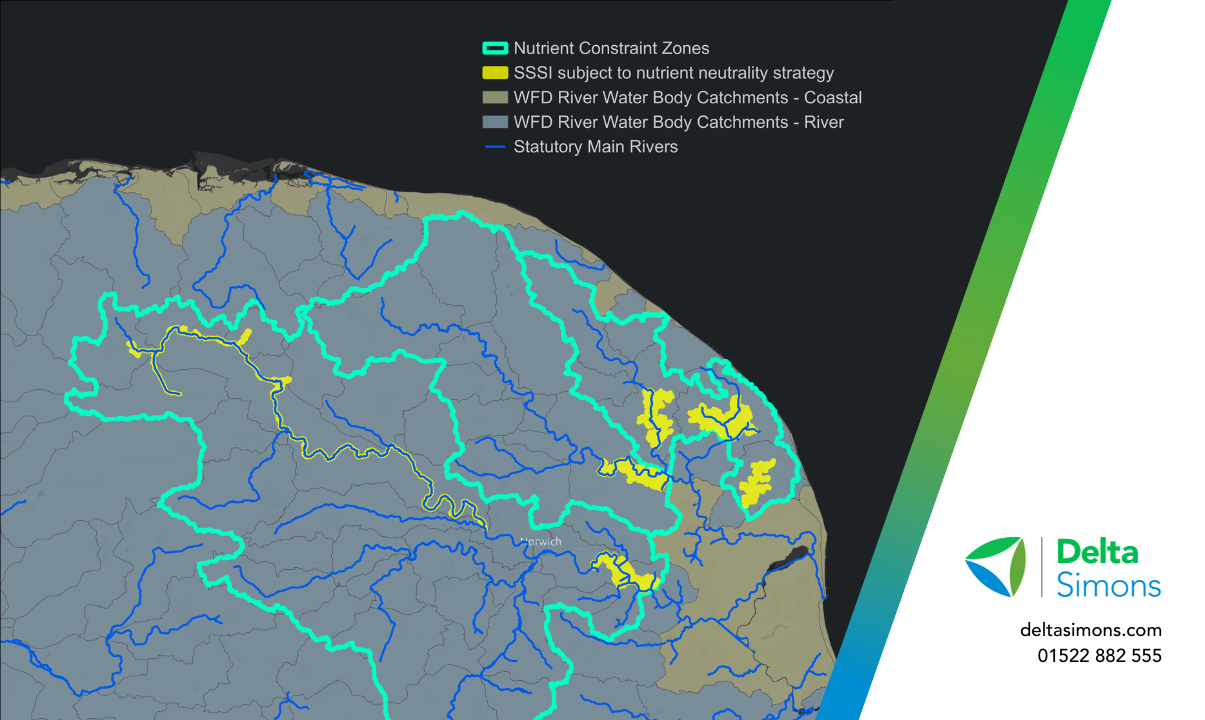Nutrient Neutrality Strategy for Sustainable Housing Growth
Contract Overview
Delta-Simons Limited was instructed by our East Anglia housing client to develop a Nutrient Neutrality Strategy for their existing housing stock of over 6000 homes to determine and quantify the potential to create capacity to support the development of new homes.
Utilising our GIS mapping, our assessment considered potential water efficiency measures that could be retrofitted to our client’s existing housing stock. Such measures would free up nutrient capacity to facilitate the construction of new residential dwellings without increasing nutrient loadings, impacting environmentally sensitive sites.

Contract Challenges
Natural England’s Nutrient Neutrality Generic Methodology (2022) states that Special Areas of Conservation (SAC), Special Protection Areas (SPA), and Ramsar sites are some of the most important areas for wildlife in the United Kingdom. They are important for their habitats and wildlife and are protected under the Conservation of Habitats and Species Regulations 2017 (the Habitats Regulations).
At some of these sites, there are high levels of nitrogen and phosphorus input to the protected water environment. These nutrients were found in eutrophication, subsequently damaging the aquatic environment. These nutrient inputs mostly emanated from either agricultural sources or wastewater from existing housing and other developments. The resulting effects on ecology from an excessive presence of nutrients were impacting on protected habitats and species.
Our Solution
Through our Nutrient Neutrality Strategy, we identified that retrofitting water efficiency measures in our client’s existing housing stock would free up nutrient capacity to facilitate the construction of new residential dwellings without increasing nutrient loadings and impacting environmentally sensitive sites.
Using the baseline figures for average water usage and Phosphorous concentrations in domestic wastewater, total water savings from installing water efficiency measures were calculated for the existing housing stock using both the phosphorus and nitrogen offsetting methodologies.
This allowed us to calculate the number of possible new developments that are able to be constructed for our housing client, whilst protecting the environment from harmful impacts.
Our report considered:
- National Planning Policy Framework (NPPF) (2021)1;
- National Planning Practice Guidance (NPPG) (2014)2;
- The Building Regulations 2010 – Sanitation, Hot Water Safety and Water Efficiency (2015 edition)3.
Is Nutrient Neutrality holding up your development? Find out how Delta-Simons Ltd can help you navigate Nutrient Neutrality for a successful application in our latest insight by clicking here.
Get In Touch
As a national provider with a regional presence, we work with clients from multiple sectors including; industrial, commercial and residential developers, retailers, industrial manufacturers, fund managers, institutional investors, hi-tech companies, the public sector and charitable organisations. For the past 30 years, our team has provided a holistic suite of trusted environmental services and advice, designed to mitigate risk to both people and the environment, whilst removing the pain from planning or maintaining developments, buildings and/or assets.
If you are planning your next development and want help considering your Neutrient Neutrality, utilise our GIS to inform your decisions. Get in touch with our team:
T: +44 (0)1522 882 555






